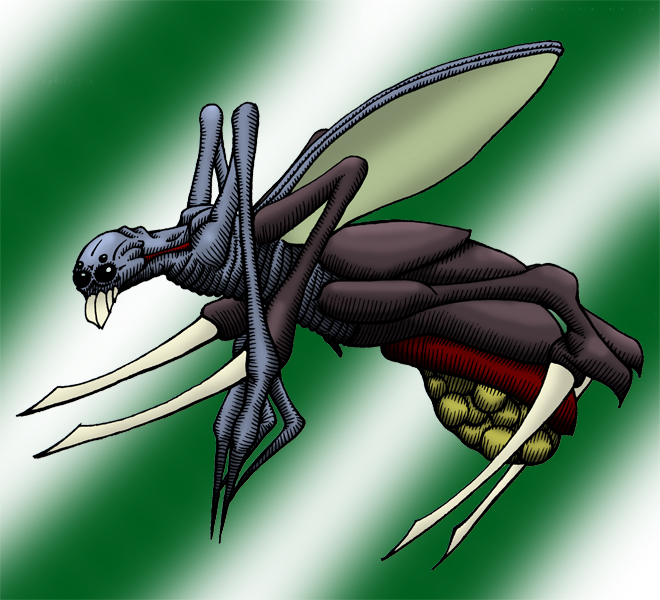Caleocripix
Caleocripix
Caleocripix by DRKPR0PH3T

Description
Description
C.O.W.<br />
<br />
The Caleocripix or as called by the natives of Gwanzora, the Kill Bug. Why? This species of insect are about 4 inches long at adulthood if they reach it. They are a very hostile species, towards eachother. All Caleocripix are hermaphroditic and are born ready to mate. Breeding occurs once in each insects lifetime and is in the first 10 hours after hatching. By 48 hours after hatching a Caleocripix will have anywhere from 100-800 fertilized eggs to lay. This is where it gets nasty. Once the eggs have increased enough in size the abdomen of the Caleocripix stretches and releases a scent which means dinner time for all other Caleocripix. Using the sharp saber like appendages they will attempt to kill eachother and eat the carcas and the eggs. However, usually 20% of the each generation of Caleocripix manage to lay their eggs and so even though the species is always fluctuating in population size, it has not yet gone extinct. In fact because of the large number of eggs that actually do survive, the population growth looked at on a large scale is steadily growing.
<br />
The Caleocripix or as called by the natives of Gwanzora, the Kill Bug. Why? This species of insect are about 4 inches long at adulthood if they reach it. They are a very hostile species, towards eachother. All Caleocripix are hermaphroditic and are born ready to mate. Breeding occurs once in each insects lifetime and is in the first 10 hours after hatching. By 48 hours after hatching a Caleocripix will have anywhere from 100-800 fertilized eggs to lay. This is where it gets nasty. Once the eggs have increased enough in size the abdomen of the Caleocripix stretches and releases a scent which means dinner time for all other Caleocripix. Using the sharp saber like appendages they will attempt to kill eachother and eat the carcas and the eggs. However, usually 20% of the each generation of Caleocripix manage to lay their eggs and so even though the species is always fluctuating in population size, it has not yet gone extinct. In fact because of the large number of eggs that actually do survive, the population growth looked at on a large scale is steadily growing.
General Info
General Info
Comments
1
Media Unspecified
Time Taken
Reference
Media Unspecified
Time Taken
Reference
Comments
You are not authorized to comment here. Your must be registered and logged in to comment
